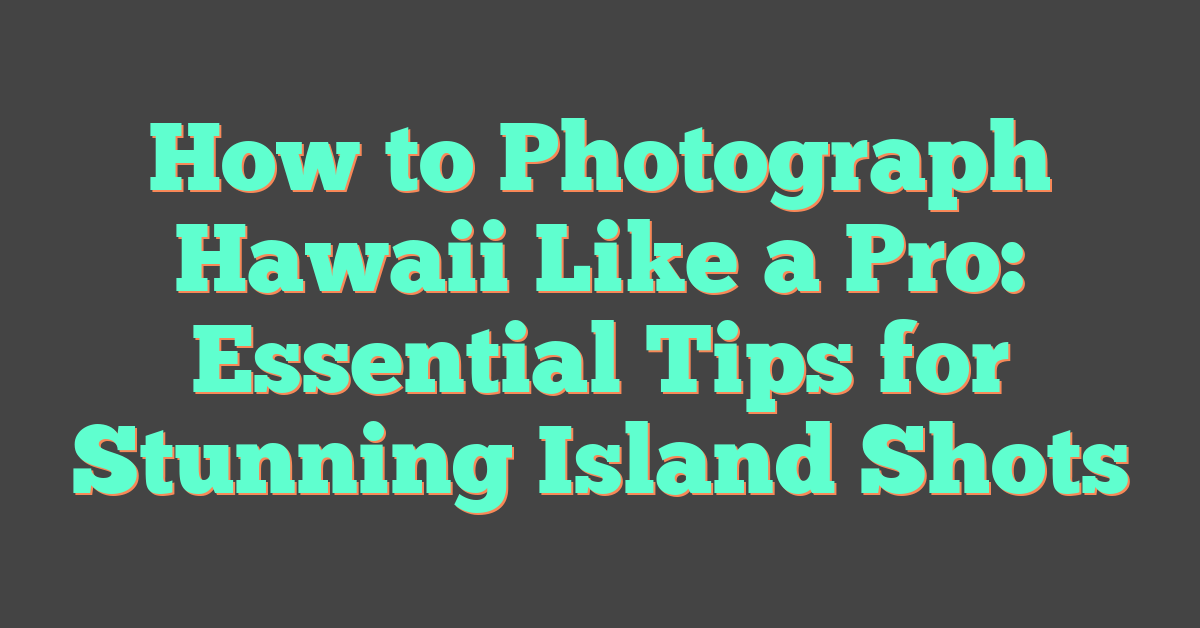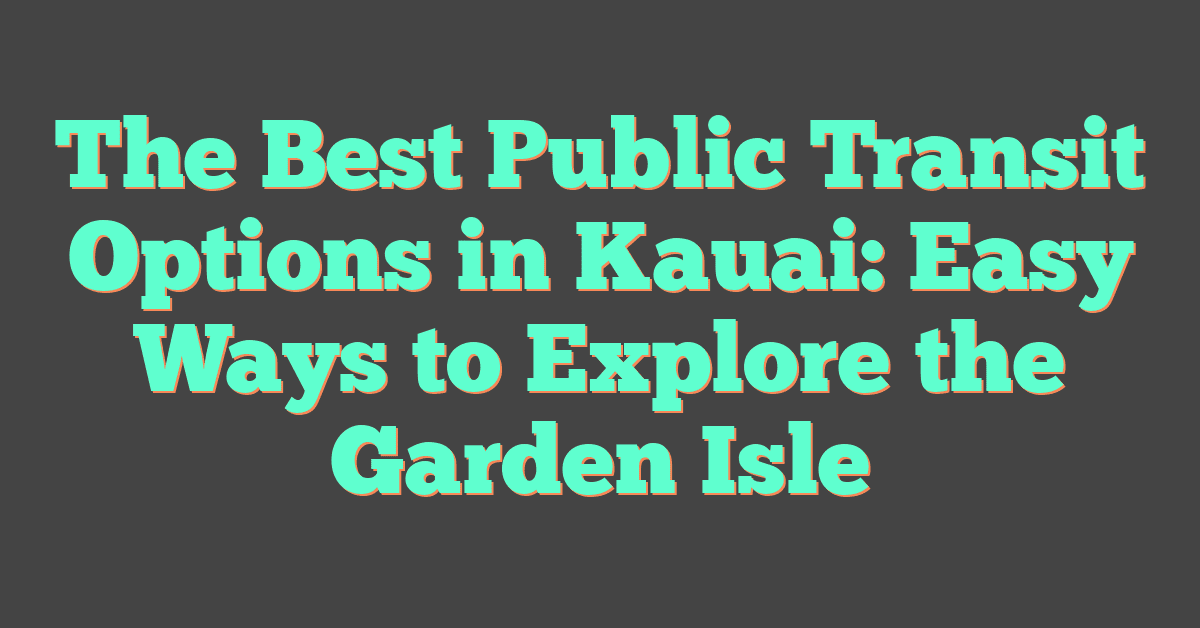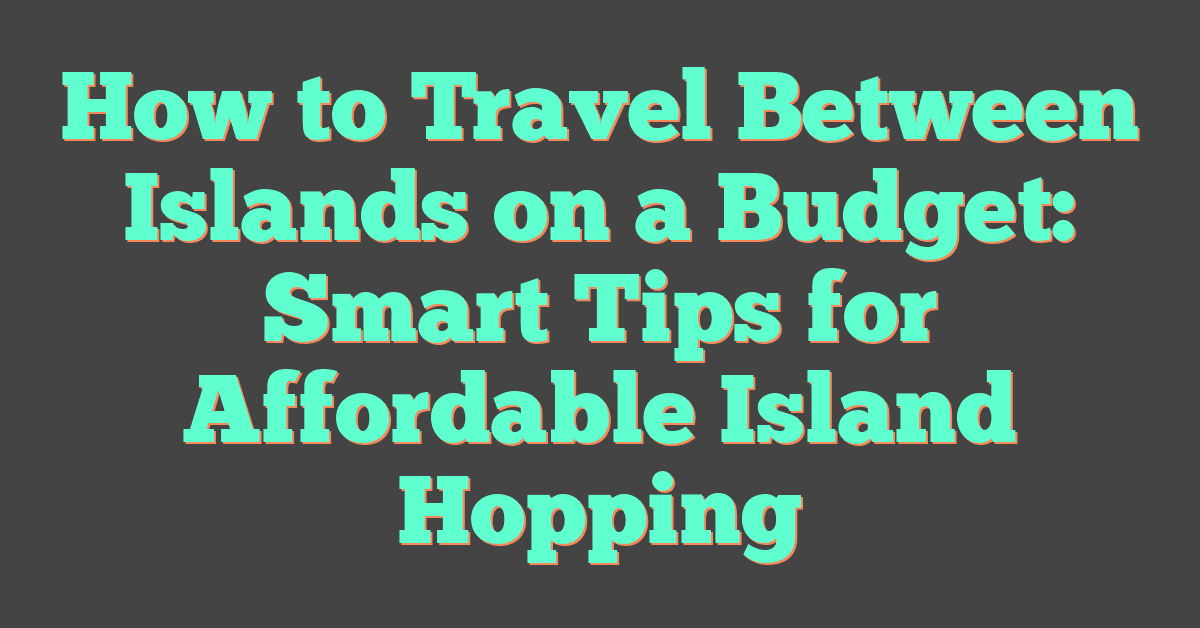Whenever I visit Hawaii, I feel amazed by its vibrant colors, majestic mountains, and sparkling beaches.

With every photo, I try to share the feeling of standing on a quiet shoreline at sunrise or watching lava glow beneath a dark sky.
The secret to taking professional-looking photos in Hawaii is knowing where to go, when to shoot, and how to capture the light that makes each island so special.

Hawaii offers unique photo opportunities, from dramatic volcanic landscapes to lush waterfalls and lively local culture.
Whether I hike up Koko Head for sunrise or photograph waves along the North Shore, a few simple photography tips help me turn snapshots into photos I’m proud of.
With the right timing, equipment, and ideas from experienced travelers, anyone can take great shots—no matter their skill level.
If you want to capture the magic of the islands, you’ll find some of the best locations and advice in guides like this one for photographing Hawaii and helpful photography tips and epic locations shared by others who love the islands as much as I do.
Essential Camera Gear for Photographing Hawaii
Packing the right camera gear makes a huge difference in my Hawaii photos.
From camera bodies to special lenses and handy accessories, these choices help me capture clear images of beaches, volcanoes, waterfalls, and wildlife.
Choosing the Right DSLR
I always pick a DSLR that offers high image quality and fast autofocus.
This helps me catch sharp shots, even if the light changes or if I photograph fast-moving waves or birds.
A lightweight model works best, so I don’t get tired carrying it all day.
For example, the Canon EOS Rebel series or Nikon D5600 give great results and are not too bulky.
I avoid cameras that are too big or heavy, especially since I often hike and move around a lot.
I also check the weather-sealing on my DSLR.
The weather in Hawaii can change quickly, so I want a camera that can handle a splash or two.
For more ideas on choosing a good camera for Hawaii, I found helpful advice at Vincent Vacations.
Lenses for Island Landscapes
I pack a wide-angle lens, such as a 16-35mm or 10-18mm.
This lets me fit more of the coastline or mountain views into each frame.
Wide-angle lenses also help when I photograph jungle scenes or waterfalls.
For close-ups of flowers or wildlife, I bring a zoom or telephoto lens, like a 70-200mm.
These lenses are perfect when I can’t get close to the subject but want to capture the detail.
I also carry a lightweight prime lens, such as a 50mm f/1.8.
It is small, sharp, and great for portraits against Hawaiian backgrounds.
For more on the best lenses to take to Hawaii, this guide from Island Hopper Guides lists some excellent picks.
Filters and Accessories
To get the most out of Hawaii’s bright sun and blue skies, I use a polarizing filter.
This cuts glare from water and makes colors pop in my photos.
I also keep a neutral density (ND) filter to shoot long-exposure images of waterfalls or waves, even in daylight.
Extra batteries and memory cards are a must, since I take a lot of photos each day.
I bring a microfiber cloth and a weatherproof camera bag to protect my gear from sand and sudden rain.
For video and underwater shots, many travelers add a GoPro or waterproof housing, as highlighted at Go Visit Hawaii.
Here’s a quick list of my favorite accessories:
- Polarizing filter
- ND filter
- Extra batteries
- Spare memory cards
- Sturdy tripod
- Lens cleaning cloth
- Rain cover or waterproof bag
Planning Your Hawaii Photography Adventure

I get the most from my Hawaii adventure by planning ahead.
I think about the best time to go, what local rules I should follow, and which sights I want to capture.
Researching the Best Seasons
Weather and light change often in Hawaii.
I check the rainy and dry seasons before booking my trip.
The dry season, from April to October, is best for sunny beach scenes.
The rainy season, from November to March, may have fewer crowds, but I pack rain gear for waterfalls and jungles.
I look up sunrise and sunset times because golden hour brings softer light and better photos.
Tidal charts help me plan ocean shots safely.
Some places, like the Na Pali Coast or volcanoes, get crowded at certain times, so I go early or late to avoid the crowds.
Planning around festivals or cultural events gives me new things to photograph, like surf contests or luaus.
I always bring a hat, sunscreen, and lots of water since the sun can be intense.
Permits and Local Etiquette
Some of the best spots in Hawaii require a permit for photography, especially in national or state parks.
If I plan to use a drone or bring professional equipment, I check what’s allowed.
Fines for breaking the rules are high.
Respecting the land, or ‘aina, is very important in Hawaiian culture.
I stay on marked trails, never touch or move sacred stones, and always pack out my trash.
When I meet local people, I ask before taking their photo and learn a few Hawaiian words as a sign of respect.
Rules may change by island, so I check sites like the Maui photographer’s guide on prepping for a shoot before I go.
I also avoid trespassing on private property, even for the “perfect” shot.
Building a Shot List
I write down my ideas for photos before the trip.
This includes natural wonders like volcanoes, waterfalls, rainforests, city life in Honolulu, and small surfing villages.
To help plan, I use apps like PhotoPills to figure out when the best light will hit famous spots.
My list covers sunrise at Haleakalā, sunset at Waikiki Beach, local markets, hula dancers, and surfers in action.
I leave space for surprises, since the adventure may lead me to something unexpected.
I keep my list handy so I don’t miss a shot during my busy days.
Top Locations to Photograph in Oahu

Oahu is perfect for all kinds of photographers.
It mixes busy city sights with peaceful beaches and beautiful natural scenes.
Capturing Waikiki’s Energy
I love taking photos in Waikiki because it always feels alive and colorful.
The shoreline is packed with action, from surfers catching waves to people relaxing under palm trees.
Sunrise and sunset are the best times to shoot, with pink and golden light reflecting off the water and buildings.
I try to find higher viewpoints, like hotel rooftops or parks, to capture the city with Diamond Head in the background.
Kalakaua Avenue is great for night photography, with its bright lights and crowds.
Waikiki’s street performers and beachfront activities add even more to my photos.
If you want inspiration or location suggestions, check out a guide to photographing top Oahu spots.
Sunrises at Lanikai Beach
Nothing beats the soft morning light at Lanikai Beach.
I get there just before sunrise, when the sand feels cool and the sky starts turning pink and orange.
The Mokulua Islands (“the Mokes”) sit right off the coast, making the perfect backdrop for sunrise shots.
I usually bring a tripod for long exposure photos, which help smooth out the waves and make the colors stand out.
The best spots are along the beach, but wooden beach access lanes add nice framing for wider shots.
If you visit on a weekday, it’s less crowded.
This makes it easier for me to focus on the changing colors without distractions.
For more tips, see this list of Oahu’s best sunrise locations.
The Beauty of Kailua
Kailua offers a different pace from Waikiki—more relaxed and natural.
I love photographing Kailua Beach for its fine white sand, calm turquoise water, and gentle waves.
In the mornings, the beach is especially peaceful, with a few early joggers or paddlers out on the water.
I sometimes turn my camera inland to capture the cloud-capped Ko’olau Mountains.
The soft light at sunrise or late afternoon brings out the changing greens and blues in my photos.
If I have extra time, I explore the nearby Lanikai Pillbox hike for sweeping views of the whole area.
That’s where I get some of my favorite wide-angle landscapes.
For more, see this photography spot roundup in Kailua.
Photographing Surfing and Ocean Scenes
Capturing Hawaii’s waves and marine life takes the right techniques, some patience, and attention to safety.
Light changes fast by the ocean, so I adjust my camera settings often for the best results.
Catching Action Shots on the Waves
When I photograph surfing in Hawaii, I use a telephoto lens with at least 300mm reach. This lens lets me get crisp close-ups of surfers even from a distance.
I set my camera to a fast shutter speed, like 1/1000th of a second or faster. This freezes moments such as a surfer riding a breaking wave.
I usually shoot in shutter speed priority mode. The camera then handles exposure while I focus on timing the action.
When the lighting changes during sunrise or sunset, this setting helps me adjust quickly. I also check the background, aiming for clean water, blue skies, and palm trees to highlight the Hawaii vibe.
I always think about ocean safety. I give surfers plenty of space, watch the tides, and never turn my back on the waves.
I pick a safe spot on the sand or a stable rock outcropping. If I use a waterproof housing for water shots, I double-check that it’s secure before going out.
Surf Photography Quick Tips
- Use 300mm+ telephoto lens
- Fast shutter speed (1/1000s or higher)
- Shutter speed priority mode
- Watch backgrounds for clean, colorful scenes
- Practice ocean safety
Tips for Underwater Photography
To photograph beneath Hawaii’s clear waters, I use a waterproof camera or a reliable underwater housing for my DSLR. Bright days work best because sunlight boosts color and clarity when I’m shooting fish, coral, or swimmers.
I get close to my subject since water reduces sharpness and color if I shoot from too far away. I keep my ISO as low as possible for crisp photos, but I raise it a little if the scene is shaded.
I pay attention to my buoyancy and stay as still as possible, especially near delicate reefs or shy marine animals. Good fins and a mask help me stay steady in the water.
Lists like these help me get great underwater shots:
- Get close to the subject for better color
- Shoot midday for best light and less blur
- Watch your breath and bubbles to avoid photo distortion
- Respect marine life and avoid touching coral
- Use a red filter or shoot RAW for truer colors later
Portrait Photography in Honolulu
Honolulu is full of vibrant settings and diverse faces. Every portrait session feels unique.
I love how the city blends island culture, historic charm, and modern energy. This mix makes it a great place to capture people and moments.
Street Portraits and Candid Moments
When I photograph street portraits, I look for genuine moments and natural expressions. Instead of posing people too much, I watch for laughter or interesting interactions between friends.
Honolulu’s busy markets, beach parks, and open-air shopping streets give me many chances to catch these real-life scenes. I prefer a lens with a medium focal length, like 50mm or 85mm, which keeps the background soft but still shows the atmosphere.
Early mornings or late afternoons have softer light, which helps people look their best without strong shadows. I try to be respectful—if someone is the main subject, I ask for permission or explain my project so everyone feels comfortable.
Local events, like festivals or cultural gatherings, are perfect for candid street portraits. Bright leis, music, and tradition add color and energy to every shot.
Finding Unique Downtown Backdrops
Honolulu’s downtown district has colorful murals, historic buildings, and urban parks. I use these features to frame my subjects and give each portrait a sense of place.
The Stangenwald building and other old structures on Merchant Street offer textured walls and old-school details. These work great for classic or creative portraits.
In between sessions, I walk around to find unexpected backgrounds like artistic doors, street art, or shaded sidewalks. Downtown also has quiet parks where I can shoot without crowds.
I book a studio at Honolulu Headshot & Portrait Photography Studio when I want a controlled setup or professional lighting. I always check the light at each spot.
Open shade from tall buildings or palm trees helps me avoid harsh sunlight. Each backdrop tells a story about my subject’s connection to the city.
Editing and Enhancing Your Hawaii Photos

Editing helps my Hawaii photos stand out. A few simple changes to color and composition can turn good shots into great ones.
Color Correction for Tropical Scenes
When I edit tropical photos, I focus on color correction. Hawaii’s bright sunlight can make colors look washed out or too blue.
I adjust the white balance to make sure the sand looks soft and the sky looks bright. If the photo looks too warm or cool, I use a slider to fix the temperature.
I watch the green tones in palm trees and grass. Sometimes, I boost the greens just a little so they pop but still look natural.
Beaches, ocean, and sunsets often need extra care. I use the saturation and vibrance tools to bring out blues in the water and reds in the sunset without making them look fake.
I like easy software like Luminar Neo for editing. It makes color correction quick and user-friendly.
Showcasing Vibrant Landscapes
To show Hawaii’s landscapes, I pay attention to cropping and detail. I use the clarity tool to make lava rocks or palm leaves stand out.
For wide views, I sometimes stitch two or three photos for a panorama. This helps share the dramatic scale of Hawaii’s cliffs and beaches.
If people or boats distract from the scene, I use the clone tool to remove them. Bright daylight can create strong shadows.
I use the shadow and highlight sliders to balance bright spots or dark areas. Good editing helps every part of the photo—from crashing waves to mountain peaks—stand out.
Sharing Your Hawaii Portfolio

After I finish editing my Hawaii photos, I want others to enjoy them. Choosing the right online spaces and sharing tools helps me reach people who love travel and photography.
Building an Online Gallery
I create an online gallery where my Hawaii photos are easy to browse. Websites like SmugMug, Wix, or Squarespace let me showcase my work with simple layouts and custom pages.
I organize pictures by location, like Oahu or Kauai, or by themes such as sunsets, waterfalls, or beaches. This makes it easier for viewers to find what interests them most.
If I want to sell prints or license images, I add a shop section or connect my gallery with a store. I keep photo quality high but use web-friendly file sizes so pages load quickly.
Some gallery sites offer password-protected albums or watermarks for extra security. I update my portfolio often, sharing new experiences from each Hawaii trip.
Using Social Media for Exposure
I choose the social media platforms that fit my goals. Instagram works well for vibrant Hawaii landscapes.
Facebook is useful for sharing full albums or connecting with travel groups. I post consistently to help my photos gain attention, especially when I use hashtags like #HawaiiPhotography or #AlohaSpirit.
I tag locations in my posts to reach people searching for Hawaii spots. I join photo challenges or collaborate with other Hawaii photographers, which leads to more sharing and new followers.
I respond to comments and messages so viewers feel welcome and interested in my work. Stories and reels let me share behind-the-scenes moments or quick highlights from my trips.
I plan ahead and post at good times to attract more viewers to my portfolio. I look at examples from photographers who have shared their Hawaii journeys to stay inspired and improve my reach.




